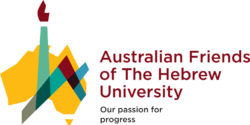Dr. Shahar Arzy is a cognitive neuroscientist at the Faculty of Medicine and a cognitive neurologist at the Hadassah Medical Center. In the time that has passed since the outbreak of the pandemic, two things have become clear: First, the Coronavirus isn’t going anywhere anytime soon, and even the much-anticipated vaccine may not be a silver bullet. Second, future pandemics may force us back into a Corona-era lifestyle. In Dr. Arzy’s eyes, the most significant change has been the physical distancing from other people, and especially loved ones, and, in particular, the social isolation of the elderly, chronically ill, and immunosuppressed.
“We know that certain populations are more susceptible to the Coronavirus. Yet in an attempt to physically protect them from disease, we’ve isolated them from their social support networks: their friends and families. This is especially true for retirees, whose social lives largely revolve around seeing people outside of their homes, and those suffering from cognitive impairments, who need external stimulation.”
Me, Myself, and I – And Everyone Else
Dr. Arzy and his team at the Neuropsychiatry Lab at the Hebrew University set out to understand how to best help these vulnerable populations. In the lab, the researchers (including computer scientists, neuroscientists, psychologists, and clinicians) use functional neuroimaging (fMRI) and computational methods to understand the ways in which the brain identifies others in relation to the “self.” For example, in a study led by Dr. Michael Peer, then a PhD student in the lab, they used an algorithm to map subjects’ Facebook friends and then studied how the brain codes our social network, each friend’s proximity to our “self,” and each friend’s characteristics.
In the context of the Coronavirus, Mordechai Hayman, a brilliant electrical engineer and an MD-PhD student in the Neuropsychiatry Lab, asked how the brain interprets “social proximity.” He defined four groups and raised hypotheses of different ways in which they could be organized around, and in relation, to the “self.”
1) The “self”
2) Our closest circle of friends & family
3) Acquaintances (based on the notion that we evolved to live in groups of ~150 people, with whom we cooperate and rely on for our physical, social, and psychological needs)
4) Celebrities (a stranger with whom we feel close)
In the study, subjects performed a number of social tasks while undergoing fMRI scans. Analyzing the results with machine learning techniques, the researchers discovered two interesting things. First: our brains perceive celebrities as the farthest from our “self” and the real people in our lives (close friends and acquaintances), despite the ease at which we “connect” with celebrities through headlines and social media. Second: while asked to imagine different people in our lives, our brains made little distinction between significant others and acquaintances.
“The fMRI scans showed that our brains cannot be fooled – celebrities serve no social purpose in our lives and cannot be a stand-in for a social network during shutdowns. On the other hand, in certain aspects, our brain treats everyone we actually know similarly – regardless of the degree of involvement in each other’s lives.”
Tools for Coping with Social Isolation
Today, digital platforms such as Zoom are heavily relied upon to socialize. Yet with all the advantages that technology brings to our life, it simply cannot replace real-life encounters. The most significant finding to emerge from Dr. Arzy and Mordechai Hayman’s study is the importance of all social ties, whether a neighborly check-in or chatting with an acquaintance at the grocery store. Another way to help combat social isolation is through tangible, 3D objects. For example, a grandchild’s art project can have a powerful impact – even if delivered by mail.
At the same time, given the prevalence of digital platforms and their immense potential for connecting people, Dr. Arzy aims to identity ways to tweak and improve these platforms, to optimize and monitor social engagement.
There’s an App for That
Dr. Arzy’s previous research on Alzheimer’s patients led him to develop a digital application that enables the mapping and quantification of social networks. The group is now working on creating a more extensive product, one that analyzes one’s social network while taking into account the proximity of family, digital skills, nature and frequency of contact, and more. This product will help remind members of a given network when and how to reach out, resulting in an optimized, tailor-made communication plan – based in the social ecology of the person in the center.
“The Coronavirus has disoriented our lives, and we all face insurmountable difficulties. Yet let us not forget those for whom disorientation is part and parcel of their daily lives. At the Hebrew University and Hadassah we have the privilege to be able to help these people through our clinical practice and research. We hope our efforts can contribute, even a little, to the well-being of these vulnerable population, now more than ever.”

